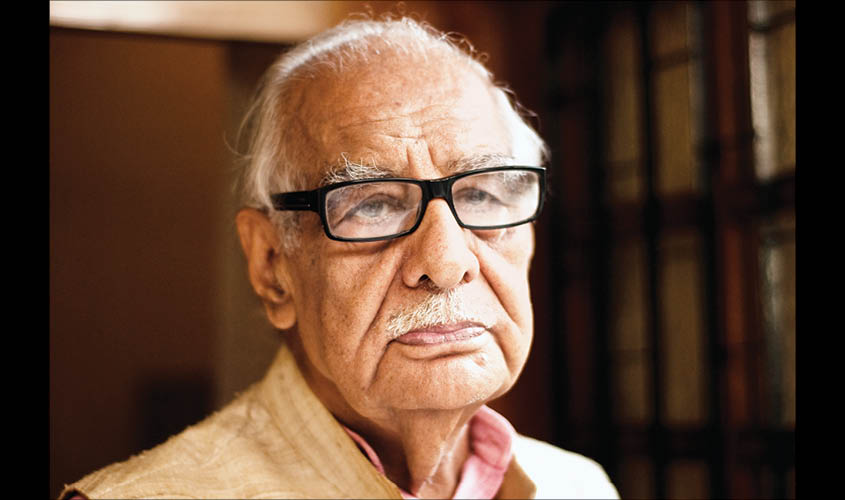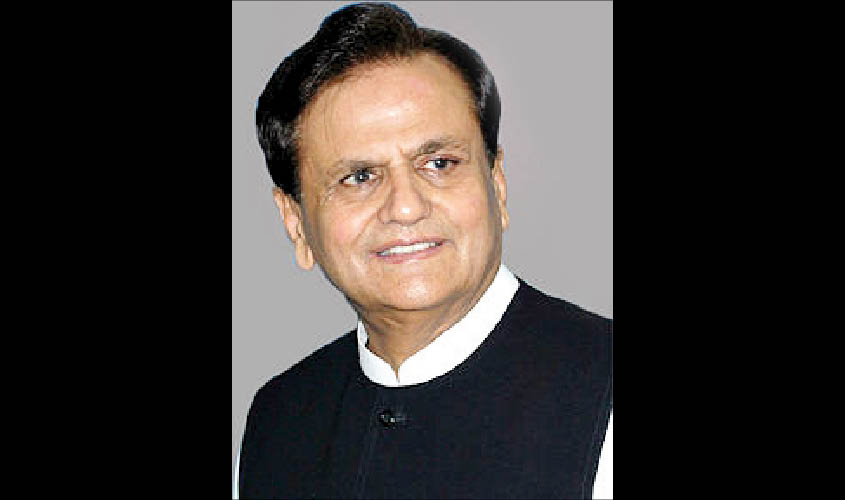Ahmed Patel gets a great gift
Congress veteran Ahmed Patel, on his 69th birth day on Wednesday, received the best gift possible. Party president Rahul Gandhi, like his mother Sonia Gandhi, bestowed his trust upon him by making him the Congress treasurer. Gandhi had earlier named Patel as a member of the reconstituted Congress Working Committee. What added more joy for Patel was that this coveted post came to him on the eve of Eid-ul-Adha. The cash-strapped Congress has once again reposed total faith in its time-tested lieutenant. Patel is back as the party treasurer to tide over the funding crunch ahead of the 2019 general elections. Low-profile Patel’s return as treasurer has come after 18 years. Rahul Gandhi is the third Congress chief under whom Patel will serve as AICC treasurer.
Patel had earlier served as the party treasurer from 1996 to 2000 under two Congress chiefs, Sitaram Kesri and Sonia Gandhi. She retained him as treasurer after assuming charge as Congress president in 1998. She soon realised Patel’s political skills and appointed him as her political secretary in 2001. Patel was Sonia’s political secretary also for long and was a key player during the UPA’s rule during 2004-2014.
“He is a tested skilful treasurer,” said a senior party leader. In May, Congress’ official Twitter handle posted a link of its crowd funding campaign, seeking public donations to “help the party restore democracy”. Now the party must prepare for the poll-going states of Madhya Pradesh, Rajasthan, Chhattisgarh and Odisha, and the Lok Sabha elections in April 2019, in which the Opposition party plans to take on the ruling BJP, now India’s richest party.

My memory of Kuldip Nayar
It was my privilege to work with veteran journalist Kuldip Nayar (95), who died on Thursday. He was my first editor when I began my journey with the Statesman in July 1972. He took me as a trainee, despite no recruitments because of newsprint shortage, making me the youngest reporter in the national capital.
Those days, it was rare to meet the editor, as all the reporting and desk operations used to be looked after by the news editor. One afternoon, the editor’s peon came to the reporters’ room and told me: “Saheb ne salam bheja hai.” Surprised, I told him, “Saheb ko mera bhi salam dena.” A senior colleague Keith Flory, who had just walked in, heard our conversation. He shouted, “Man, you have been summoned by the editor, run.”
Scared, I wondered whether I had committed a mistake. I found a group of young girls sitting before him.
In a deep voice, Nayar Saheb said, “These Assamese girls are working as guides in their state pavilion in Asiad (1972). They have not received their salaries. Do a good story, and don’t forget to send the copy to the Calcutta edition.” The Assam government sent a special messenger to New Delhi next day to pay the girls their salaries. Nayar Saheb sent a small slip to me, which simply read, “Good job.”
My second memorable meeting, among many, with Nayar Saheb was some months later. It was a sensitive international story. He backed me to the hilt. It was about a Russian scientist taking asylum in the American embassy on arrival from Dhaka in an Aeroflot flight. The Russian had escaped from the then Palam airport after jumping the customs barrier. A hunt had been launched to trace him.
After visiting the airport, I stopped at the British high commission and the US embassy to check whether the Russian had taken asylum there. Both denied. A cheeky Marine commented, “Sir, no Russian has ever come to us since the asylum taken by Stalin’s daughter Svetlana (on 6 March 1967).” I was not expecting a Marine to be so much knowledgeable. It made me suspicious.
Next day, I got the exclusive break. A top Delhi Police officer, refusing to be identified, disclosed that the missing Russian was “inside American embassy which we and the Intelligence Bureau are watching from all sides”. The police had traced the taxi driver who had taken the Russian to the US embassy. It was exactly like the Svetlana story. She had driven to the American embassy in a taxi to seek political asylum. The CIA later whisked her away to the US via Rome and Geneva.
The Russian scientist had first jumped into a waiting Jeep, but the driver had refused to take him anywhere. He then got into a taxi of and shouted, “American embassy.” Not understanding, the driver raced the taxi towards downtown, thinking that he would figure out the foreigner’s destination on the way. After taking him to various places, the driver understood that his anxious fare wanted to go to American embassy.
When the taxi driver stopped outside American embassy, the passenger gave him his wristwatch and ran towards two waiting Americans who pushed him inside their car parked nearby. Their car went inside the embassy and gates were closed. The police source agreed to my request not to share it with any other newspaper.
Excited with my first scoop, I rushed back and narrated all the facts to Nayar Saheb, who just asked me, “Are you sure? Hope you are not being used.” When I said that I trusted my source, Nayar Saheb said, “Very well, go ahead.”
The Americans were furious with the Statesman’s Page 1 report “Missing Russian Inside US Embassy” and contacted Nayar Saheb to stop follow-ups. But he stood behind me like a rock and a father figure. On the next day, the Americans “smuggled out” the Russian in an ambulance to the “friendly” British high commission, which on the same day informed the police that they had “caught” this Russian while running around on their second floor and that he sustained injuries while jumping down. He was handed over to the police. The Americans were more upset as in my next day’s report I mentioned that this reporter had seen an ambulance parked inside the US embassy compound.
The Russian was admitted to the Irwin Hospital (now JP Hospital). Quietly, he was put on an Aeroflot flight to Moscow in the night. Later, I learnt that the Americans had not found the Russian scientist “useful” and had decided to get rid of him. Months later, I learnt that after a closed-door trial, he had been shot dead.
While leaving the Statesman, Nayar Saheb called me and said, “Young man, you don’t have an inkling how much pressure I had faced from the Americans to stop you from pursuing that Russian story. Must keep your passion alive forever!”
Namita may be fielded in 2019 polls
Late Prime Minister Atal Bihari Vajpayee’s foster daughter Namita Kaul Bhattacharya is likely to be considered by the Bharatiya Janata Party as a Lok Sabha candidate in the 2019 general elections. Highly placed sources said that the RSS may not be averse to the idea. Her nomination to the Rajya Sabha is also not being ruled out. It is too early for the saffron brigade to talk to Namita as the family is in mourning. Besides Namita, Vajpayee is survived by his granddaughter Niharika.
Namita may be considered for one of those constituencies which Vajpayye represented in the Lok Sabha. He was a Member of Parliament for 12 terms—a 10-time Lok Sabha member and twice of Rajya Sabha. The only time he lost a Lok Sabha election was against Madhavrao Scindia of Congress from Gwalior in 1984. Vajpayee represented Lucknow, Balrampur, Gwalior and New Delhi in the Lok Sabha. In 1962 and 1986, he was elected to Rajya Sabha. Namita may also be considered for Agra, as Vajpayee’s ancestral home Bateshwar is in this district.

